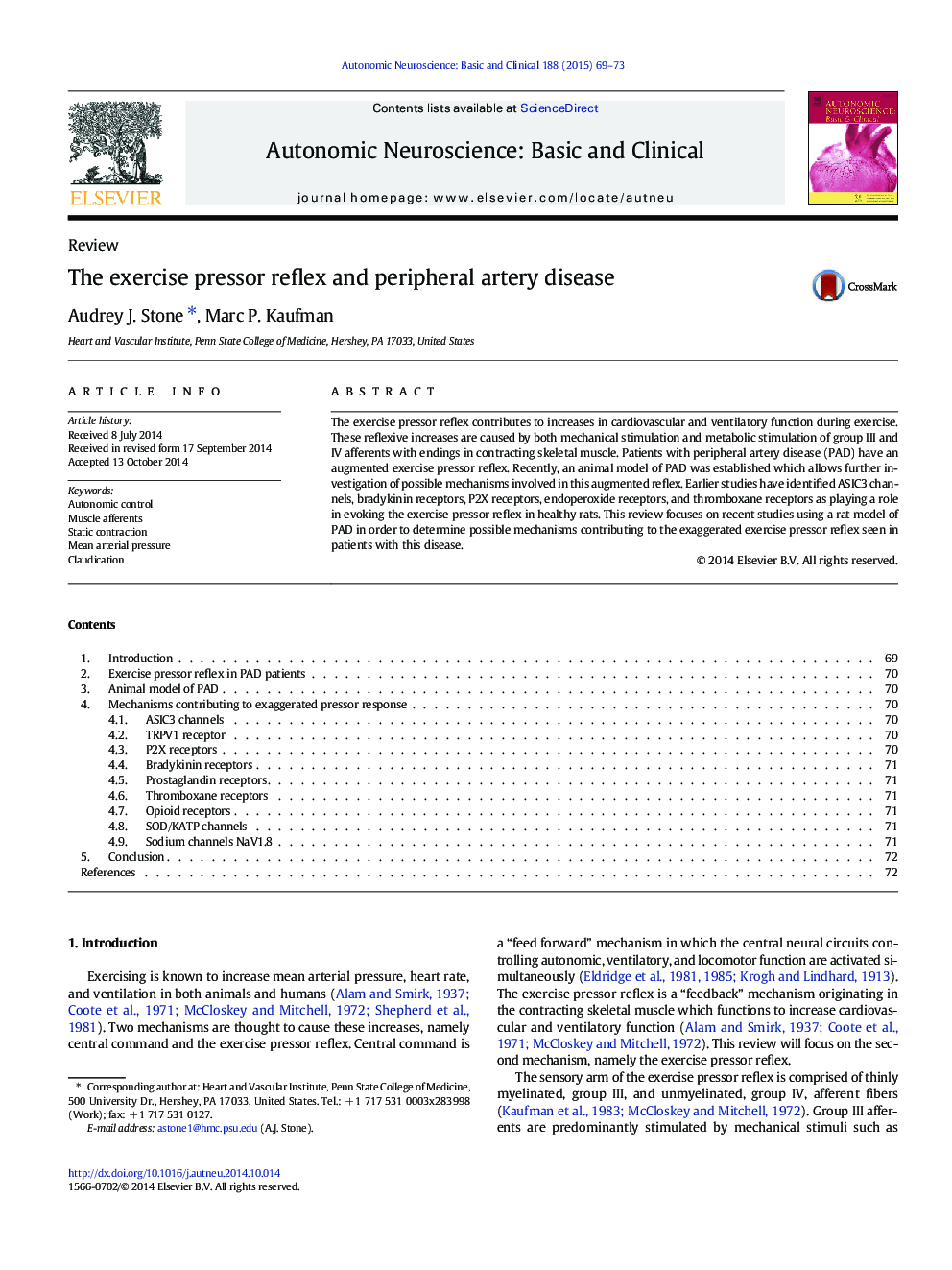| Article ID | Journal | Published Year | Pages | File Type |
|---|---|---|---|---|
| 3034625 | Autonomic Neuroscience | 2015 | 5 Pages |
•In humans, the exercise pressor reflex is exaggerated in peripheral artery disease.•In rats, the exercise pressor reflex is exaggerated after the femoral artery is ligated for 72 h.•In rats, ASIC3, P2X, and EP4 receptors contribute to this exaggerated exercise pressor reflex.
The exercise pressor reflex contributes to increases in cardiovascular and ventilatory function during exercise. These reflexive increases are caused by both mechanical stimulation and metabolic stimulation of group III and IV afferents with endings in contracting skeletal muscle. Patients with peripheral artery disease (PAD) have an augmented exercise pressor reflex. Recently, an animal model of PAD was established which allows further investigation of possible mechanisms involved in this augmented reflex. Earlier studies have identified ASIC3 channels, bradykinin receptors, P2X receptors, endoperoxide receptors, and thromboxane receptors as playing a role in evoking the exercise pressor reflex in healthy rats. This review focuses on recent studies using a rat model of PAD in order to determine possible mechanisms contributing to the exaggerated exercise pressor reflex seen in patients with this disease.
